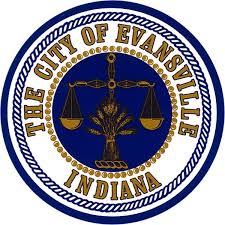|
|||||||||||||||||||||||||||||||||||||||||||||||||||||||||||||||||||||||||||||||||||||||||||||||||||||||||||||||||||||||||||||||||||||||||
|
|
HOT JOBS
City Council Meeting JUNE 13, 2022 Agenda
AGENDA
| I. | INTRODUCTION |
06-13-2022 Agenda Attachment:
| II. | APPROVAL OF MEETING MEMORANDUM |
05-23-2022 Memo Attachment:
| III. | REPORTS AND COMMUNICATIONS |
| IV. | SPECIAL ORDERS OF THE DAY |
| V. | CONSENT AGENDA:Â FIRST READING OF ORDINANCES AND RESOLUTIONS |
A. ORDINANCE G-2022-06 An Ordinance Amending Chapter 18.175 of the Evansville Municipal Code Sponsor(s): Beane Discussion Led By: ASD Chair Mosby Discussion Date: 6/27/2022 Notify: Ron London, Area Plan Commission G-2022-06 Attachment:
B. ORDINANCE F-2022-10 An Ordinance of the Common Council of the City of Evansville Authorizing Additional Appropriations within the Department of Metropolitan Development Sponsor(s): Moore Discussion Led By: Finance Chair Moore Discussion Date: 6/27/2022 Notify: Kelley Coures, DMD F-2022-10 Attachment:
C. ORDINANCE F-2022-11 An Ordinance of the Common Council of the City of Evansville Authorizing Transfers of Appropriations, Additional Appropriations and Repeal and Re-Appropriation of Funds for Various City Funds Sponsor(s): Moore Discussion Led By: Finance Chair Moore Discussion Date: 6/27/2022 Notify: Russ Lloyd, Jr., Controller F-2022-11 Attachment:
D. ORDINANCE R-2022-18 An Ordinance to Rezone Certain Real Estate in the City of Evansville, State of Indiana, More Commonly Known as 408 SE Third St Petitioner: Verizon Wireless Owner: Select Medical Property Ventures LLC Requested Change: R5 to C4 w/ UDC Ward: 5 Elpers Representative: Russell Brown, Clark Quinn Law R-2022-18 Attachment:
E. ORDINANCE R-2022-19 An Ordinance to Rezone Certain Real Estate in the City of Evansville, State of Indiana, More Commonly Known as 1211-1217 E Michigan St Petitioner: PAR Management, LLC Owner: PAR Management, LLC Requested Change: R2 to C4 w/ UDC Ward: 3 Heronemus Representative: Krista Lockyear, Stoll, Keenon, Ogden, PLLC R-2022-19 Attachment:
| VI. | COMMITTEE REPORTS |
| VII. | REGULAR AGENDA:Â SECOND READING OF ORDINANCES AND RESOLUTIONS |
A. ORDINANCE G-2022-05 An Ordinance Amending Title 18 of the City of Evansville Code Concerning Land Use and Zoning (Solar) Sponsor(s): Beane Discussion Led By: Public Works Chair Brinkmeyer Discussion Date: 6/13/2022 Notify: Ron London, Area Plan Commission G-2022-05 Attachment:
| VIII. | RESOLUTION DOCKET |
| IX. | MISCELLANEOUS BUSINESS |
A. THE NEXT MEETING of the Common Council will be Monday, June 27, 2022 at 5:30 p.m.
B. ADDITIONAL MISCELLANEOUS BUSINESS
| X. | COMMITTEE REPORTS |
| XI. | ADJOURNMENT |
Deaconess Sports Park To Officially Celebrate $3M Of Improvements On June 10, 2022
Deaconess Sports Park To Officially Celebrate $3M Of ImprovementsÂ
Evansville, IN – June 8, 2022 – Visit Evansville, the Evansville Regional Economic Partnership, and Deaconess Sports Park will host a ribbon cutting on Friday, June 10 at 3 PM to officially celebrate the completion of almost $3 million worth of renovations at the park. Most notably, synthetic turf infields were added to all eight playing surfaces, along with drainage and other improvements, that will significantly enhance tournament operations and allow a greater variety of softball and baseball events to be held throughout the year.
“The new turf and other renovations to Deaconess Sports Park really help tournament directors market and sell their events. Rising costs in fuel and other supplies make teams want to be confident, when they sign up for tournaments, that they will be playing regardless of rain and other mild weather conditions. I am hopeful that in 2023, I will be able to bring a couple of new, major events to the Evansville area that could boost revenue for the entire city. USSSA is excited to see what Evansville is doing around youth and amateur sports,†said Tim Foster, State Director, Indiana USSSA (United States Specialty Sports Association).
Deaconess Sports Park opened in 2015 and has become one of the region’s premier sporting facilities. In over seven years of operation, it has hosted nearly one million visitors and generated over $98 million dollars in economic impact. Other key benefits from the recent renovations include a long season due to reduced risk for rainouts and weather-related cancellations, maintenance efficiencies, and the flexibility to set bases at alternating distances that will allow for more divisional softball and baseball participation.
What: Deaconess Sports Park Ribbon CuttingÂ
When: Friday, June 10 at 3 PMÂ
Where: Deaconess Sports Park, 4300 Heckel Road, Evansville, IN 47725Â
About Visit Evansville
Visit Evansville is the official sales and marketing agency for tourism in Evansville, Indiana, and Vanderburgh County. Visit Evansville is dedicated to marketing and supporting local hotels and attractions and enhancing the area’s economy by selling the region as a premier destination for conventions, meetings, sports events, leisure, and business. Additionally, Visit Evansville operates the Evansville Sports Complex, a state-of-the-art, multi-use sports facility, home to Deaconess Sports Park and Goebel Soccer Complex.
Attorney General Rokita Credits Success To Teamwork With Local Governments StatewideÂ
Attorney General Rokita Credits Success To Teamwork With Local Governments StatewideÂ
Attorney General Todd Rokita has successfully brought together every Indiana city, town and county to participate in a historic $507 million settlement that will bring massive relief to Hoosiersstruggling with the devastating effects of the opioid epidemic.Â
“Today marks a milestone victory in our battle against drug addiction,†Attorney General Rokitasaid. “This scourge has inflicted such unspeakable pain on so many Hoosiers. We are fighting daily for our families, friends and neighbors. By all of us working together, we can ensure a brighter day is coming.â€Â
Achieving the participation of all 648 political subdivisions in Indiana — i.e., cities, towns and counties — required overcoming several obstacles. The most significant impediment came from outside attorneys who initially convinced several individual communities to pursue their own litigation rather than opt into the statewide settlement.Â
And later, once those same private attorneys conceded the best course was to join the statewide settlement, some of them insisted on building into the disbursement plan greater windfalls for themselves.Â
“Some lawyers seemed enticed by the prospect of big paydays,†Attorney General Rokita said. “We worked with our partners in local government to make sure the opportunity to serve the public good won out over private pecuniary interests.â€Â
The settlement funds will support local law enforcement efforts, drug task forces, regional treatment hubs, and early intervention and crisis support, among other important programs.Â
Indiana technically is a party to two settlements — one with Johnson & Johnson, which manufactured and marketed opioids, and one with the nation’s three major pharmaceutical distributors (Cardinal Health, McKesson and AmerisourceBergen).Â
The overall arrangement is part of a $26 billion agreement settling allegations of 46 states and many units of local government against the four companies. Â
“No amount of money will ever compensate families for the loss of loved ones,†Attorney General Rokita said. “But a settlement of this magnitude helps prevent similar types of corporate irresponsibility from ever happening again.â€Â
Attorney General Rokita and his team worked directly with elected members of the Indiana General Assembly and local government leaders to create a statutory structure that will efficiently distribute funding directly to local communities.Â
This past session, House Enrolled Act 1193 vastly improved upon a previous existing framework that featured too much state-level bureaucracy. Previously, the Indiana Family and Social Services Administration (FSSA) would have acted as a “middleman†distributing funds to local governments.Â
“Together, we have created an excellent disbursement plan for our opioid settlement,†Attorney General Rokita said. “From the very beginning, my own mission was to ensure that our local communities received the maximum funding possible — and that the individual communities also could decide exactly how to use the funds they received.â€Â
The settlement framework continues to be a 50-50 split between the state and local governments.Â
Thirty percent of the settlement funds with “no strings attached†is split evenly between local communities and the state. That 30 percent can be used however local communities and the state choose to use them. Â
The other 70 percent is designated for opioid abatement efforts in local communities. State leaders decide exactly how to allocate half that amount — or 35 percent of the total. And this year’s legislation now ensures that local governments decide exactly how to allocate the other half of that total.Â
‘Local government is closest to the people and most aware of community needs,†Attorney General Rokita said. “So that’s where the best decisions can be made regarding exactly how to spend these funds. Just as I did as Secretary of State and in Congress, I will continue to trust the wisdom of local leaders.â€Â
EVSC AND PUBLIC EDUCATION FOUNDATIONS ANNOUNCES SUMMER MUSCIAL
 Evansville, IN – June 7, 2022 – The EVSC Foundation, which recently merged with the Public Education Foundation (PEF), invite media to attend the Summer Musical announcement this week. Dr. Smith, Superintendent of the Evansville Vanderburgh School Corporation, will provide an update about the upcoming show, sponsored by Old National Bank.Â
Information:Â
What: EVSC Foundation & EVSC Summer Musical AnnouncementÂ
When: Friday, June 10, 2022 at 10amÂ
Where: Old National Events Plaza, Aiken Theatre AtriumÂ
About the EVSC FoundationÂ
The EVSC Foundation seeks to transform the community alongside EVSC by leveraging community partnerships and resources to support world-class educational experiences that empower all students to thrive. The EVSC Foundation is home to over 100 programs supporting public education educators and students in Evansville. The EVSC Foundation recently merged with the Public Education Foundation (PEF) and now sponsors PEF legacy programs such as the Summer Musical. To learn more about the EVSC Foundation, visit www.evscfoundation.org.Â
About Old National Events PlazaÂ
Old National Events Plaza, managed by ASM Global, is Evansville, Indiana’s premier convention center and largest live entertainment theatre. Housing a spacious 2,500-seat theatre, 38,000 square- feet of column free exhibit space, a beautiful 14,000 square-foot ballroom, and 12,00 square-feet of meeting space, Old National Events Plaza hosts a variety of events. The venue offers easy scheduling, one-stop-shop services, and in-house catering and audio-visual services. For more information and a complete schedule of events, please visit www.oldnationaleventsplaza.com.Â
2019 National Champion Michael Rogers Joins Trailblazer Coaching Staff
VINCENNES, Ind. – 2019 NJCAA Division I National Champion Michael Rogers is returning to Vincennes University this upcoming season after being hired as an Assistant Coach for the VU men’s basketball team.
“It means everything to me to be hired as an Assistant Coach at VU,†Coach Rogers said. “It feels almost like I’m coming back home after playing here under the tutelage of Coach Franklin and Coach Davis. It feels good to be back at VU and to be able to pass on my knowledge as a player to the team.â€
“I missed Vincennes University and my former teammates a lot these last few years,†Rogers said. “It’s only right that I come back and help the current players and have the coaches help me as well. I want to be a head coach one day and I feel like this is the right place to start, working with Coach Franklin and Coach Davis.â€
Rogers is a graduate of Evansville Harrison High School and joined the Trailblazers basketball team before the 2018-19 season.
Rogers was a member of the 2019 Vincennes University National Championship team and averaged 2.2 points and 1.5 rebounds per game as a freshman at VU.
Rogers would return for his sophomore season, where he again battled for minutes off the bench and averaged 1.8 points and 1.3 rebounds per game.
Rogers’ best game as a Trailblazer came in his freshman season when she scored 14 points against Lincoln Land.
Rogers helped the Trailblazers to a two-year combined record of 62-7, with a staggering 35-2 record inside the Physical Education Complex.
Rogers would then sign to play his final two seasons for his hometown University of Southern Indiana Screaming Eagles.
Rogers played in 20 games in his two seasons at USI and scored 15 points and grabbed nine rebounds for the Screaming Eagles.
“We like to keep is in the family as best as we can,†VU Hall of Fame Head Coach Todd Franklin said of hiring Coach Rogers. “We’ve done that over the years when the opportunities arise. That position for us has been a few different things over the years, but it’s usually going to be a younger guy just getting started in the business and that’s Michael.â€
“Michael does know the way things are around here and hopefully he will be a good conduit to the team,†Franklin added. “The flow of information is typically better when you have someone who has been through it and truly understands. He can take what I’m saying and add the player’s perspective of what he did when he was here and how that affected his life and his game.â€
“He has that perspective and obviously it was good for the guys that were here with him,†Franklin said. “I think he can help with that and I think if a player really wants to know, certainly when you get that perspective from a former player, it should help you buy in.â€
“The trust factor is always important for us,†Franklin added. “My circle is not very big and I don’t trust many people. But the one’s I do, we are pretty tight. So there is a trust factor there and I think as we try to get this thing kickstarted back to where it was and where we’ve been for 24 years of getting it right. We want to make sure we’ve got this thing back on the tracks like it has always been and I think we are on the way to that. We’ve made strides and gains toward that and I think Michael can help with that.â€
“On a day-to-day basis he is going to be watching our study tables and making sure the guys are in the gym, things that a young guy does,†Franklin said. “I trust he will do a good job of it and we need him to do a job of it. It’s a great starter for someone like Michael who wants to get into the business. I think it gives him valuable experience and gets him better connected. Obviously, the better we do, the better it is for him. That is how it works for all these guys, players and coaches. You can see all of our former assistant coaches where they have gone with head coaching opportunities or Division I assistant jobs. That’s a byproduct of how things work and how successful you are. Hopefully we will be back to that and I think Michael can be a part of helping us.â€
“I’m just trying to show the players we have here now what it means to work hard and what it takes to win,†Rogers added. “I hope to help bring the winning culture back to VU that I know Coach Franklin and Coach Davis have built. I’m here to give guidance from a player’s perspective and just looking for any way to help.â€
“I feel like I can help the players here stay strong mentally,†Rogers said. “It’s a long season, especially being here during the summer during preseason workouts, on top of maintaining grades and staying on top of things in the classroom. I feel like I can help the players be stronger on the court and academically.â€
Rogers is joining one of the best coaching staffs in all of Junior College basketball, with NJCAA Hall of Fame Head Coach Todd Franklin entering his 13th season on the VU sidelines and lead Assistant Coach Brian Davis who was named one of the 50 most impactful coaches in JuCo basketball and will be returning for his 18th season at Vincennes University.
The Trailblazers are coming off of a 12-19 season in 2022 and will be looking to get back on track and reclaim their spot as one of the top Junior College basketball programs in the country.
The Vincennes University Athletic Department welcomes back Assistant Coach Michael Rogers and is excited to have him join the VU coaching staff this coming season.
JUNE 2022 HAPPENINGS AT BALLY’S
JUNE 2022 HAPPENINGS
- 24-HOUR CASINO. MUST BE 21 TO PLAY. PROMOTIONAL RULES AND CONDITIONS APPLY. BALLY’S EVANSVILLE ENCOMPASSES 45,000 SQUARE FEET OF GAMING SPACE FEATURING OVER 1,000 SLOT GAMES AND OVER 30 LIVE AND ELECTRONIC TABLE GAMES
- TWO FIRST-CLASS HOTELS
- THREE DINING OPTIONS
- THREE BARS
GIFT GIVEAWAYS
Qualified Bally Rewards Members receive a Free Gift or Free Slot Play.
Thursday, June 9 - Choice of Marathon, Walmart, Amazon, Texas Roadhouse, Macy’s, VISA Gift Card
Wednesday, June 15 - Barbasol 10-Piece Pro Hair Clipper Kit
Thursday, June 16 - Choice of Marathon, Walmart, Amazon, Texas Roadhouse, Macy’s, VISA Gift Card
Wednesday, June 22 -Â Non-Stick Electric Griddle
Thursday, June 23 - Choice of Marathon, Walmart, Amazon, Texas Roadhouse, Macy’s, VISA Gift Card
Saturday, June 25Â – Blowout Gift Giveaway – Choose from a variety of Gifts or $20 Free Slot Play. Legend Players get three gifts. Superstar Players get two gifts. All other invited Players get one gift.
Wednesday, June 29 -Â Cobalt Multitasker Charger/Speaker/Pad
Thursday, June 30 - Choice of Marathon, Walmart, Amazon, Texas Roadhouse, Macy’s, VISA Gift Card
PAYDAY SUNDAY
Each Sunday in June • 6AM – 5:59AM CT
Open to qualified Bally Rewards Members.
Bally Rewards Members receive bonus slot play, based on the number of points earned, while playing favorite slot games with their Bally Rewards card inserted in the machine. Participants check their points at the Players Club. Points will be automatically loaded to their Bally Rewards Card that same day and free slot play will be valid for 24 hours.
SWIPE & WIN
Tuesdays, June 7 & 21 from 6AM – 12AM CT
Open to qualified Bally Rewards Members.
Players swipe their card at any Promotional Kiosk to see how much Free Slot Play they have won, from $5, $10, $25, or $500. Free Slot Play will be automatically added to Bally Rewards Cards from the Promotional Kiosk and is valid for 48 hours.
JACKPOT BONUS OFFER
Friday and Saturday, June 10 & 11
Open to qualified Bally Rewards Members.
Legend, Superstar, and Star Bally Rewards members who win a Jackpot of $1,200 or more will be extended a Bonus Free Slot Play reward. $300 for Legend Tier, $150 for Superstar Tier, and $100 for Star Tier. Jackpot Bonus times are 5 PM – 12 AM on both days.
HARD ROCK BILOXI TRIP GIVEAWAY
Saturday, June 11 from 5 PM – 9 PM CT
Open to qualified Bally Rewards Members.
Invited players will visit the Bally’s Evansville Executive Conference Center Mezzanine on Level 2 and register with a Casino Promotions Representative to pick up their Trip Gift Voucher. Players have 3 months to book their trip and 6 months to travel.
$20,000 JACKPOT PARTY
Wednesday, June 15
Open to Bally Rewards Members who received a Jackpot of $1,200 or more between January 1, 2020 – June 14, 2022. Invited guests check in and activate their entries at any promotional kiosk on June 15, between 3:30 PM – 5:30 PM. Drawings will be held from the Players Club. Five names will be drawn every half hour from 6 PM to 7:30 PM. Each winner receives $1,000 in Free Slot Play.
$35,000 TAKE IT OR LEAVE IT CASH & FREE SLOT PLAY GIVEAWAY
Friday and Saturday, June 17 & 18
Open to all Bally Rewards Members.
Earn entries from 6 AM – 7:30 PM each day for the daily Drawing. To be eligible for the daily Drawing, guests check in and activate their entries any time between 5 PM – 7:30 PM CT. The drawing is at 7:30 PM and winners will be announced at 8:30 PM. If your name is drawn, you can TAKE IT and spin the Prize Wheel to win $25 to $750 Free Slot Play. OR… you can LEAVE IT and put your name into the $15,000 Cash Drawing held on June 18.
$20,000 JACKPOT PARTY
Friday, June 24
Open to Bally Rewards Members who received a Jackpot of $1,200 or more between January 1, 2020 – June 23, 2022. Invited guests check in and activate their entries at any promotional kiosk on June 24, between 5 PM – 7 PM. Drawings will be held from the Players Club. Five names will be drawn every half hour from 7:30 PM to 9:00 PM. Each winner receives $1,000 in Free Slot Play.
MONTHLY EMAIL DRAWING
Bally Rewards Members submit their email addresses to enter a monthly drawing for a $1,000 Bonus Free Slot Play.
LEGENDARY CELEBRATION
Legend Club Members receive complimentary appetizers and alcohol each Friday from 5 PM-9 PM at Cavanaugh’s On the River.
PREMIUM WEEKEND PARTY
Legend Club Members receive complimentary drinks from 7 PM-12 AM at the High Limit Bar on Fridays and Saturdays.
FOOD SPECIALS
June 19
Celebrate Father’s Day at Tap House. Buy one burger at the regular price and get a second burger at half price.
June 22
Celebrate National Onion Rings Day at Tap House with half price Onion Rings all day.
Tap House features a Burger of the Month and a Beer of the Month. See the restaurant for details.
ENTERTAINMENT
THE PIANO BAR AT CAVANAUGH’S ON THE RIVER – The casual upscale atmosphere of the Piano Bar at Cavanaugh’s is the ideal place to enjoy live regional entertainment on Thursdays 6 PM-9 PM and on Fridays and Saturdays from 6 PM-10 PM CT.
June 10 -Â Matt Clark
June 11 -Â Bob Green
June 16 -Â Andrea Wirth
June 17 -Â Matt Clark
June 18 -Â Bob Green
June 23 -Â Andrea Wirth
June 24 -Â Bob Green
June 25 -Â Matt Clark
June 30 -Â Andrea Wirth
About Bally’s Evansville
Bally’s Evansville is a multi-million-dollar entertainment complex located on the scenic banks of the Ohio River in southwestern Indiana. The single-level casino encompasses 45,000 square feet of gaming space featuring over 1,100 slot games, over 30 live and electronic table games, and a High Limit Room. Accommodations include a 243-room hotel tower and a 95-room boutique hotel. The property also includes a sports book, three dining options, three bars, a conference center, a riverfront event center, and a 1,660-vehicle attached parking garage.
About Bally’s Corporation
Bally’s Corporation is a global casino-entertainment company with a growing omnichannel presence of Online Sports Betting and gaming offerings. It currently owns and manages 14 casinos across 10 states, a horse racetrack in Colorado, and has access to OSB licenses in 18 states. It also owns Gamesys Group, a leading, global, online gaming operator, Bally’s Interactive, a first-in-class sports betting platform, Monkey Knife Fight, the fastest growing daily fantasy sports site in North America, SportCaller, a leading, global B2B free-to-play game provider, and Telescope Inc., a leading provider of real-time fan engagement solutions.
With approximately 10,000 employees, Bally’s casino operations include more than 15,800 slot machines, 500 table games and 5,300 hotel rooms. Upon closing the previously announced Tropicana Las Vegas (NV) transaction, as well as completing the construction of a land-based casino near the Nittany Mall in State College, PA, Bally’s will own and manage 16 casinos across 11 states. Its shares trade on the New York Stock Exchange under the ticker symbol “BALY”.











